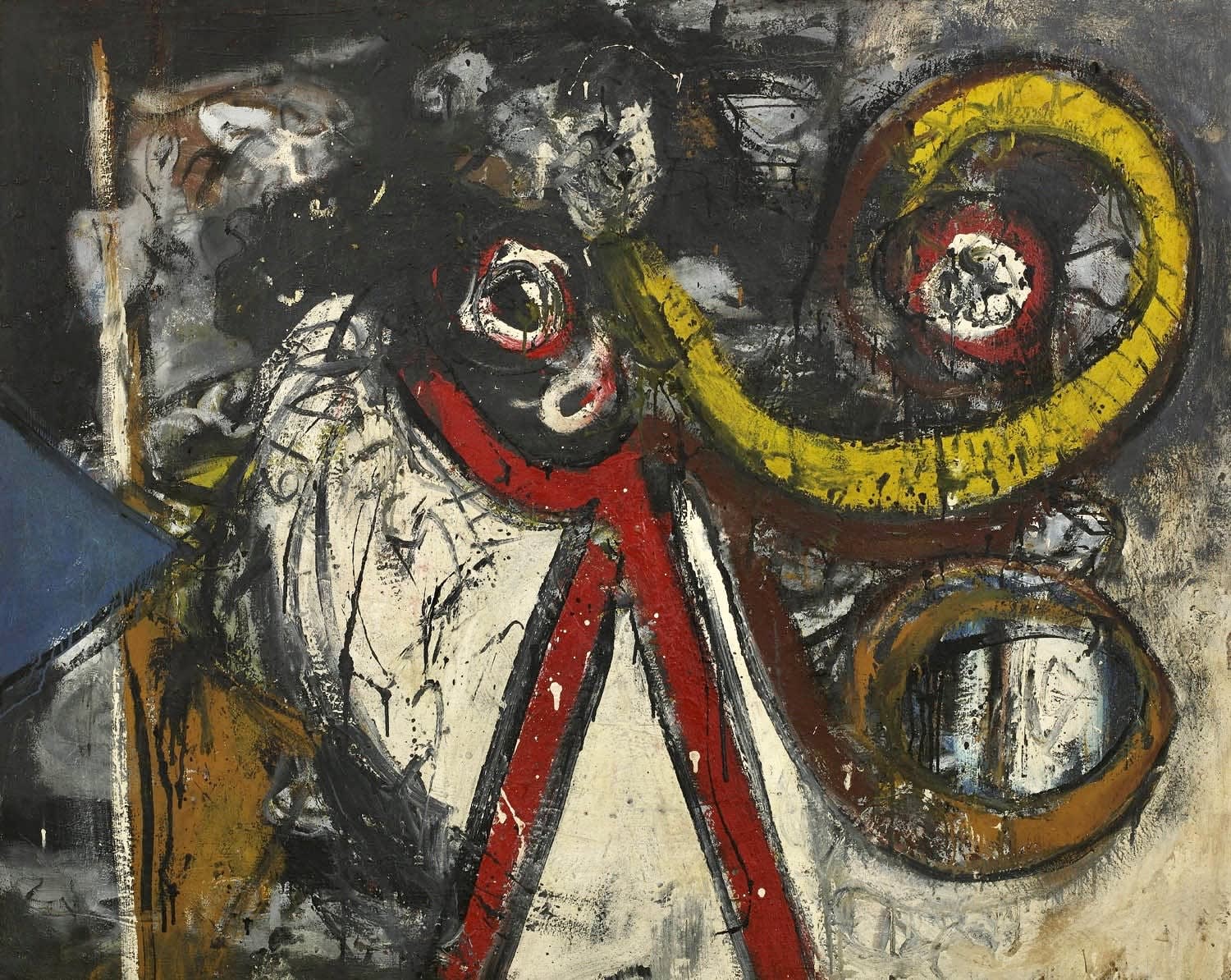Alan Davie
Bull God No.5, 1955
Oil on board
48 x 60 in
122 x 152 cm
122 x 152 cm
In 1955, Davie made a significant breakthrough and experienced a tremendous burst of creativity with 25 important paintings appearing, twice as many as in 1954. The grid-like elements of the...
In 1955, Davie made a significant breakthrough and experienced a tremendous burst of creativity with 25 important paintings appearing, twice as many as in 1954. The grid-like elements of the late 1940s and early 1950s and recessive effects of such paintings as Between Screens (1953) and Altar of the Black Diamond (1953) which had given way to the tremendously powerful abstract impressionist style of paintings like Upsurge No.1 (1952) and Green Egg (1952), transform into a more elaborate mix of structure and swirling forms seen in works such as Witches Sabbath (1955). Mysterious cave-like structures and visceral bone formations are seen in such masterpieces as Fate of the Lovely Dragon (1955). 1955 is, perhaps, Davie’s greatest year, with not only the Bull God series, but such great works as Birth of Venus (Tate), Witches Sabbath, Altar of the Moon and Seascape Erotic. Bull God No. 5 is a museum quality painting of great importance and the last and, arguably, the most successful of the series described by Alan Bowness as « pure inventions of never to be forgotten power» .The dark and earthy colours and areas of extremely free and swirling brushwork mix with deliberately calligraphic motifs amid the general chaos and turmoil. The famous blue triangle, which made its first appearance in Altar of the Blue Diamond (1950), and, perhaps, most famously, in Blue Triangle Enters (1953), re-appears to provide a sense of continuity and a break into the general confusion. The tremendous depth of the paintings is greatly added to by the brilliant red central form which anchors the composition and creates a tremendous sense of depth as the beast looks out from almost cloud-like formations, the very mists of time. The recessive effect is further enhanced by the blue triangle and the tusks of the creature which contain their own world of shape and space. There is an overwhelmingly primeval feeling and magic and mystery are everywhere as it stares out of an ancient world. Part god, part animal, the painting draws upon Davie’ s most powerful themes of ritual and deep intuition. In Davie’ s own words he was seeking « an expression of philosophy … the visible sign and sacrament of all that the artist felt to be the inner meaning, the everlasting element in man and in nature, present, past and future» . Summarising his career to date in 1966, Davie stated that he was 'engaged in a ritual of religious communion with the great eternal' and in Bull God No.5 we see the embodiment of Davie’ s central purpose.
Opus 0.124
Opus 0.124
Provenance
Gimpel Fils, London
Exhibitions
London, Gimpel Fils, Alan Davie , 29 November - 7 January 2006, cat.no.93
Literature
A. Bowness, Alan Davie, Lund Humphries, London, 1967, cat. no.93
D. Hall and M. Tucker, Alan Davie, Lund Humphries, London, 1992, cat.no.124
